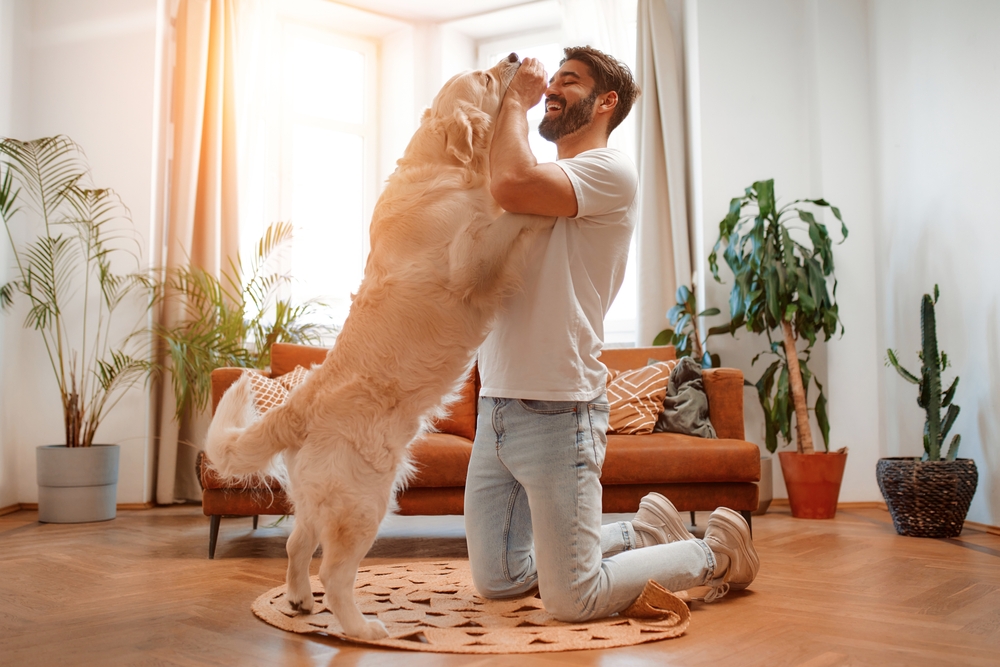The bond between a dog and its human companion is one of the purest forms of connection. It’s built on mutual trust, respect, affection, and understanding. Strengthening this special bond can be achieved through positive reinforcement training—a humane, science-backed method that rewards desirable behavior with praise, treats, toys, or other forms of motivation. This approach not only helps to shape your dog’s behavior but also builds a relationship rooted in trust and joy. Let’s dive deeper into how positive reinforcement can enrich your connection with your furry friend and make your time together more rewarding.
Why Positive Reinforcement is Effective
Positive reinforcement training focuses on rewarding good behavior, which encourages your dog to repeat it. Unlike punishment-based methods that can create fear or anxiety, positive reinforcement is about building trust and boosting confidence. When your dog sees you as a source of positive experiences, they are naturally more eager to spend time with you, listen to your cues, and seek your approval. This approach emphasizes clear communication, consistency, and compassion—key ingredients for a strong bond.
Steps to Strengthen Your Bond Using Positive Reinforcement
-
Set the Stage for Success
- Create a Positive Environment: Choose a distraction-free space when you’re beginning training. This helps your dog focus on you and the task at hand. A quiet room, your backyard, or a secluded area in a park can work well.
- Keep Sessions Short and Fun: Dogs have varying attention spans, and long training sessions can lead to frustration for both of you. Aim for short bursts of 5 to 15 minutes, making training a game rather than a chore.
-
Find What Motivates Your Dog
- Experiment with Different Rewards: Some dogs are highly food-motivated, while others prefer toys, praise, or physical affection. You can test by offering different rewards during training and observing what excites your dog the most.
- Use High-Value Rewards When Needed: For more challenging behaviors or in distracting environments, use special high-value treats (like pieces of cheese, cooked chicken, or liver treats). These rewards hold your dog’s attention and increase their motivation to please.
-
Be Consistent with Your Cues and Responses
- Use Clear Verbal and Visual Cues: Dogs thrive on consistency. Using the same verbal cue (“sit,” “stay,” etc.) and, if possible, adding a hand signal, makes it easier for your dog to understand what you expect.
- Reward Immediately: Timing is crucial for effective positive reinforcement. Reward your dog immediately after they perform the desired behavior so they can clearly link the behavior to the reward.
-
Turn Training into a Bonding Experience
- Incorporate Training into Daily Life: Positive reinforcement doesn’t have to be limited to structured training sessions. You can reinforce good behavior throughout the day, such as rewarding your dog for calmly waiting at the door, not jumping on guests, or coming when called during walks.
- Make Training Interactive and Playful: Use games like fetch, hide-and-seek, or tug-of-war to reinforce cues. Incorporating play keeps training engaging and deepens your connection through shared enjoyment.
-
Celebrate All Progress—Big and Small
- Reward Small Wins: Every step of progress, no matter how small, is worth celebrating. Did your dog sit on cue for the first time? Give plenty of praise! Small successes build confidence and lay the foundation for more complex behaviors.
- Vary Rewards to Keep Things Exciting: While treats are great, mixing in praise, affection, or a quick play session prevents your dog from becoming bored with the training routine.
-
Be Patient and Compassionate
- Respect Your Dog’s Learning Pace: Dogs, like people, learn at different speeds. Some behaviors may take longer to master than others. Patience and understanding are essential. Avoid getting frustrated; instead, break down complex behaviors into smaller, manageable steps.
- Redirect, Don’t Punish: If your dog doesn’t respond as expected, gently redirect their focus and offer positive reinforcement for the desired behavior. Punishing mistakes can erode trust and make your dog hesitant to engage.
Strengthening Your Bond Outside of Training
While structured training is effective, you can deepen your connection beyond formal sessions. Here are additional ways to use positive reinforcement in everyday life:
- Interactive Play Sessions: Dogs love playtime, and it’s a great way to bond. Reward your dog for bringing back a ball during fetch or for dropping a toy on cue. Play strengthens your bond by associating you with fun and happiness.
- Daily Walks and Adventures: Use walks as a chance to reinforce behaviors such as loose-leash walking, sitting at crosswalks, or coming when called. Bring treats along to reward good behavior and make walks more enjoyable.
- Grooming and Handling Time: Many dogs find grooming stressful. Make it a positive experience by offering treats and praise during brushing, nail clipping, or ear cleaning. This helps your dog feel more comfortable and builds trust in handling situations.
Overcoming Challenges with Positive Reinforcement
Positive reinforcement is a powerful tool, but it may come with challenges. Here’s how to tackle some common obstacles:
- “My Dog Only Listens When I Have Treats.” Gradually phase out treats by using intermittent reinforcement. Begin by rewarding every correct response, then switch to rewarding every second or third success. Mix in other rewards like praise, toys, and life activities (e.g., walks). Use consistent markers (like clickers) and gradually increase training difficulty while keeping treats out of sight.
- “My Dog is Distracted During Training.” Start training in low-distraction areas before gradually increasing distractions. As your dog’s skills improve, they’ll be better equipped to focus in more stimulating environments.
- “My Dog Doesn’t Respond to Commands.” If your dog struggles with a particular cue, break it down into smaller steps or use a higher-value reward to regain their focus. Consistency and patience will lead to progress.
The Lasting Benefits of a Strong Bond
A well-bonded dog is a happy, confident dog. Positive reinforcement not only encourages desirable behavior but also strengthens the emotional connection between you and your dog. The trust, respect, and love you build through this approach result in better communication, a happier household, and a lifelong partnership.
Positive reinforcement transforms training into an opportunity to build a meaningful relationship with your dog. By focusing on rewarding good behavior, fostering trust, and creating a joyful learning experience, you deepen your bond and create a loving, mutually rewarding partnership. Remember, every training session, walk, and cuddle is a chance to strengthen your connection—so grab some treats, a big smile, and enjoy the journey together!
Want to discover more about how to keep your pup happy, healthy, and mentally stimulated? Check out our other blog posts here!


